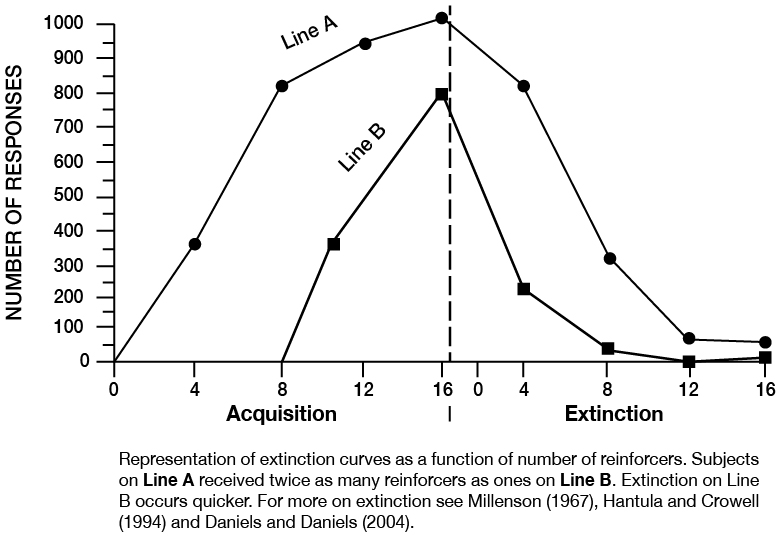Combatting the Rare Error: The Critical Role of Science in Safety
Organizational operations are increasingly complex. As a result, keeping workers and the environment safe is becoming equally complex. Common sense and decades-old approaches are no longer enough. While safety uses science for designing physical barriers and safety mechanisms, what about the human component? A truly safe work environment requires executives, managers and frontline workers who understand their own and each other’s behavior and how to create an environment where even rare errors are anticipated and planned for.
...create an environment where even rare errors are anticipated and planned for.
 The way an organization handles rare errors is a litmus test for how well leaders understand behavior as it relates to safety. Rare errors are often approached as individual or group failures, when in fact they are most often a failure of leadership.
The way an organization handles rare errors is a litmus test for how well leaders understand behavior as it relates to safety. Rare errors are often approached as individual or group failures, when in fact they are most often a failure of leadership.
There are usually two causes of rare errors. They are caused by inadequate training or by an environment that produces too few reinforcers to keep the employee focused on the task. By focused we mean that the performer is immune to elements in the environment that would tend to distract him.
Fluency Training and The Rare Error
In order to execute a process or procedure safely, one must know how to do a task safely and have the motivation to perform it exactly as trained. Behavior fluency is defined as automatic, non-hesitant responding. Its benefits are long-term retention of skills and knowledge, improved attention span, resistance to distraction, endurance, and application of the knowledge and skill to novel situations. The advantages of fluency to safety are obvious; however, safety training rarely reaches fluency and many organizations depend on long periods of on-the-job experience to reach it. The problem is that during the long period where habits are not at the fluency level, exposure is unnecessarily high.
The investment in training to fluency has a very large payback when all the costs of accident and injury are factored into the safety equation. As T.C. Cumming, a former Navy Seal says, “The more you sweat in times of peace, the less you bleed in times of war.” He is referring to the intense training that Navy Seals undergo in order to perform flawlessly on their missions. Many accidents and injuries are due to inadequate training in that fluency was not demonstrated at the point of training. By not training to fluency, we save a penny that will later cost us a dollar . . . or much more.
Extinction: The Unseen Obstacle in Safety
Extinction is the decrease in the frequency of behavior caused by a lack of reinforcement. In other words, without reinforcement behavior fades away. Although many factors affect the rate of extinction, in general the rate is related to the number of reinforcers received for the behavior. Behaviors that receive few reinforcers in training and few on the job are subject to the effects of extinction in a matter of days or even hours. The following graph demonstrates that behaviors that receive fewer reinforcers extinguish more quickly.
Increased Risk of Catastrophic Failure
An irony in safety is that the better you get at working safely, the higher the risk you run for having a catastrophic failure. As safety performance improves, there will be fewer reinforcers for monitoring behavior. Therefore, when an incident does occur, it has the potential to be catastrophic; no one will be looking because looking will likely have undergone extinction.
 An early sign that extinction is occurring is that small variances in usual performance occur, but are not thought to be significant. These variances may take the form of misreading a dial or gage, not paying attention to an unusual noise, being preoccupied with some off-task situation, or failing to make a periodic check of equipment. In time, these variances will occur much more frequently since “not doing something” requires less effort, a built-in reinforcer. Since attending is less frequent over time, the catastrophic event will catch everyone off guard when it occurs.
An early sign that extinction is occurring is that small variances in usual performance occur, but are not thought to be significant. These variances may take the form of misreading a dial or gage, not paying attention to an unusual noise, being preoccupied with some off-task situation, or failing to make a periodic check of equipment. In time, these variances will occur much more frequently since “not doing something” requires less effort, a built-in reinforcer. Since attending is less frequent over time, the catastrophic event will catch everyone off guard when it occurs.
Job focus is determined by the frequency of reinforcers received. When the majority of the reinforcers available in a job setting come from doing the work, employees are highly focused on the job. When few reinforcers are produced by focusing on the work, it takes very little non-work activity to distract any performer— a sign of impending extinction.
From a leadership perspective, small variances in safety performance always demand attention since they may be an indication of extinction, the unseen danger in a high-performing safety culture.
Methods for Protecting Against the Rare Error
When you observe employees in the workplace, you will see what is and is not reinforcing. Whatever people are doing pinpoints where the reinforcement is occurring. If employees are focused on the job, reinforcement is occurring for those work behaviors. If people are looking around, talking on their cell phones, reading a paper, or just daydreaming, you know that insufficient reinforcement is taking place to keep people focused on their tasks.
This knowledge is highly diagnostic for safety leaders as they can see potential problems that relate not only to safety but to areas such as productivity and quality. When employees are not on task, there is a problem with the rate of reinforcement available for the performer on that task. When you understand this fact, it is easy to see that punishing the performer will not solve the problem. Unless actions are taken to increase reinforcement for the task, attention to the task will decrease and eventually extinction will occur.
Because of the high levels of quality and safety in some organizations, the behavior of checking for errors or problems produces no reinforcement for the observer since their job (reinforcer) is to catch the error. Therefore some method of creating things to catch, see or respond to is needed to sustain high levels of checking performance.
TSA screeners at airports, for example, look at large numbers of briefcases, suitcases, and so on without finding suspicious items. The solution is for TSA to put more items in the system and reinforce improvement in catching them, not to take the performers off the line for more training. In this case training is not the problem. The behavior is extinguished on the line and that is the only place that the error can be corrected.
Many performers go through safety checks and inspections overlooking errors in plain sight. This is not because they are lazy or careless but because the environment they work in has insufficient reinforcers to maintain high levels of alertness. It is the leader’s responsibility to engineer those environments to produce effective levels of reinforcement. Therefore, the employee’s behavior is a reflection of how well the leader is doing his/her job.
Knowing the science of behavior in detail produces solutions to many problems that have plagued organizations for a very long time. Granted, common sense solutions work sometimes, but often they don’t. Conversely, the laws of behavior never change. Once you know them you are able to solve problems in a new and ever-changing workplace.

This article is derived from Safe By Accident: Leadership Practices that Build a Sustainable Safety Culture, written by Dr. Judy Agnew and Dr. Aubrey Daniels. For more information, visit the ADI Store.
Dr. Judy Agnew is Senior Vice President of Safety Solutions at Aubrey Daniels International and a recognized thought leader in the field of behavior-based safety, safety leadership, safety culture, and performance management. She is an expert consultant who works with clients to create behavioral interventions that ensure organizations are safe by design. Judy partners with clients to create behavior-based interventions that use positive, practical approaches grounded in the science of behavior and engineered to ensure long-term sustainability. Judy has written three safety-related books and a new book on the way, including co-author of Safe By Accident: Take the Luck Out of Safety - Leadership Practices That Build A Sustainable High Performance Safety Culture.
Dr. Aubrey C. Daniels, founder of Aubrey Daniels International, has devoted his career to working with organizations of all types and sizes to apply the science of human behavior in their workplace. Aubrey is known for being a leading authority on human behavior in the workplace. He is the author of six best-selling books including Safe By Accident: Take the Luck Out of Safety - Leadership Practices That Build A Sustainable High Performance Safety Culture.


